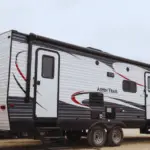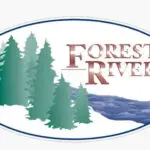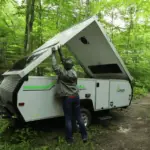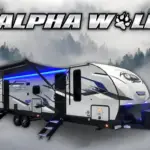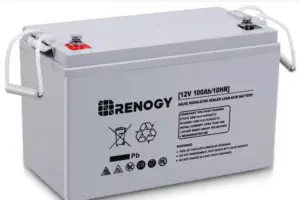If you’re an avid RV camper, you know that one of the biggest challenges can be finding campsites that can accommodate your vehicle.
National parks are some of the most popular destinations for RV camping, but not all campsites can accommodate larger RVs. So, what is the best RV length for fitting in national park campgrounds?
The answer to this question is not simple, as it varies depending on the specific national park and campground.
However, there are some general guidelines that can help you determine the best RV length for your needs.
In this article, we’ll explore those guidelines and provide some tips to help you find the perfect campsite for your RV.
National Park Campground RV Size Restrictions
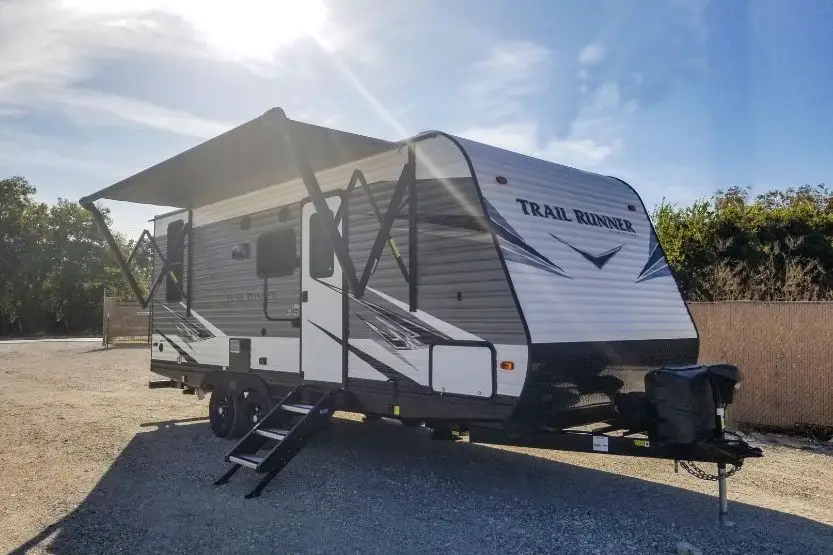
If you’re planning on camping in a national park with your RV, it’s important to know the size restrictions before you hit the road. Most national park campgrounds have rules and regulations in place about the size of RVs they allow. These restrictions are in place to ensure that all campers have a safe and enjoyable experience.
The size restrictions for RVs in national park campgrounds can vary from park to park. However, as a general rule, the safest length for an RV to be allowed into the majority of these campsites is 35 feet or less. Anything larger than this will start to restrict where you can park and limit your options for campsites.
It’s important to note that some national parks have specific restrictions on RV length. For example, Lava Point Campground in Zion National Park allows RVs up to 19 feet, while other areas in the park have a maximum RV length of 40 feet. Yellowstone National Park restricts RVs to a maximum length of 40 feet, while Grand Teton National Park has a maximum length of 45 feet.
When planning your trip, be sure to check the specific restrictions for the national park you plan to visit. This will help you determine what size RV you should rent or purchase for your trip. Keep in mind that smaller RVs are generally easier to maneuver and park, which can be an advantage in some of the more crowded national park campgrounds.
Factors to Consider When Choosing the Best RV Length for National Park Campgrounds
When planning a trip to a national park, one of the most important decisions you’ll make is choosing the right RV length. While it may be tempting to go for the biggest and most luxurious RV, it’s important to consider the following factors when making your decision:
- Campground Size Restrictions: All national parks have different size restrictions for RVs. Some campgrounds may only allow RVs up to 22 feet, while others may allow RVs up to 40 feet. It’s important to research the specific size restrictions for the national park you plan on visiting to ensure your RV will fit in the campground.
- Maneuverability: National park campgrounds can be tight and difficult to navigate, especially for larger RVs. Consider the maneuverability of your RV when choosing the length. A shorter RV may be easier to maneuver and park in the campground.
- Number of Passengers: The number of passengers traveling with you can also impact your RV length decision. If you’re traveling with a large family or group, a longer RV may be necessary to accommodate everyone comfortably.
- Storage Space: Another factor to consider is the amount of storage space you’ll need. A longer RV may have more storage space, which can be important for longer trips or if you plan on bringing a lot of gear.
Ultimately, the best RV length for national park campgrounds will depend on your specific needs and preferences. It’s important to carefully consider all of the factors above before making your decision.
RV Lengths for Popular National Parks
If you’re planning a trip to a national park and bringing your RV, it’s important to know the length restrictions for the campgrounds. Here are some popular national parks and their RV length limits:
| National Park | RV Length Limit |
|---|---|
| Olympic National Park | 24-28 feet, depending on the campground |
| Redwood National Park | 24-28 feet, depending on the campground |
| Rocky Mountain National Park | 24-31 feet, depending on the campground |
| Yellowstone National Park | 40 feet or less |
| Yosemite National Park | 40 feet or less |
It’s important to note that these length limits are not set in stone and may vary depending on the specific campground within the park. Be sure to check with the park’s website or call ahead to confirm the length restrictions before you arrive.
In addition to length restrictions, some campgrounds may also have restrictions on the height or weight of your RV. It’s important to be aware of all restrictions before you arrive to avoid any issues or complications during your stay.
While it may be tempting to bring a larger RV to have more space and amenities, it’s important to consider the limitations of the campgrounds in national parks. Choosing an RV that fits within the length restrictions will ensure that you have a comfortable and enjoyable stay without any unexpected surprises.
Tips for Navigating National Park Campgrounds with an RV
When it comes to RV camping in national parks, it’s essential to plan ahead and be prepared. Here are some tips to help you navigate national park campgrounds with an RV:
1. Check the RV size limits: Before you book your campsite, make sure to check the maximum RV length allowed in the campground. Most national park campgrounds have size restrictions, so it’s crucial to know if your RV will fit. Also, consider the width and length of the parking apron.
2. Reserve your campsite in advance: National park campgrounds fill up quickly, especially during peak season. To ensure you have a spot, make a reservation as soon as possible. Some campgrounds allow reservations up to six months in advance.
3. Arrive early: If you don’t have a reservation, arriving early can increase your chances of getting a spot. Many national park campgrounds operate on a first-come, first-served basis, so arriving early in the morning is your best bet.
4. Be aware of campground restrictions: National park campgrounds have rules and regulations that you must follow. Some campgrounds have quiet hours, generator restrictions, and fire restrictions. Make sure to read the park’s rules and regulations before you arrive.
5. Drive carefully: National park roads can be narrow and winding, so it’s essential to drive carefully. Some park roads are not suitable for RVs, so make sure to research potential restrictions and cautions for driving and camping with your RV in every wild preserve you hope to visit.
6. Be mindful of weather conditions: Weather advisories should also be taken seriously. National park roads can take you to the top of the world and burn your RV brakes out at the bottom. Be sure to pay attention to weather conditions and adjust your plans accordingly. By following these tips, you can have a safe and enjoyable RV camping experience in national parks. Remember to plan ahead, be prepared, and respect the park’s rules and regulations.
Conclusion
Choosing the right RV length for fitting into national park campgrounds can be a daunting task, but with the right information, it can be a breeze. As we’ve seen, the ideal RV length for fitting into most national park campgrounds is 27 feet, although this can vary depending on the specific park and its regulations.
It’s important to do your research before embarking on your RV adventure to ensure that you choose an RV length that will allow you to comfortably and safely navigate through the campgrounds of your choice. Keep in mind that some parks have strict size restrictions, while others are more lenient.
When making your decision, consider factors such as the size of your family, the amenities you require, and your travel plans. If you’re planning on visiting multiple national parks, it may be wise to choose an RV length that is more versatile and can fit into a wider range of campgrounds.
Remember to always reserve your spot well in advance, especially during peak season, to avoid disappointment. And most importantly, have fun exploring the beauty of our national parks in your perfectly sized RV!

We created RVcrown.com in 2020 as a way to geek about everything we’ve learned and are still learning about RVs. You’ll find in-depth articles covering reviews, specs, and features of the top RVs in the market. Contact me. Disclaimer: The information and advice provided in this blog are for educational and informational purposes only. The author does not guarantee any particular result or outcome from following the advice provided. See more about us.

